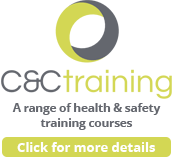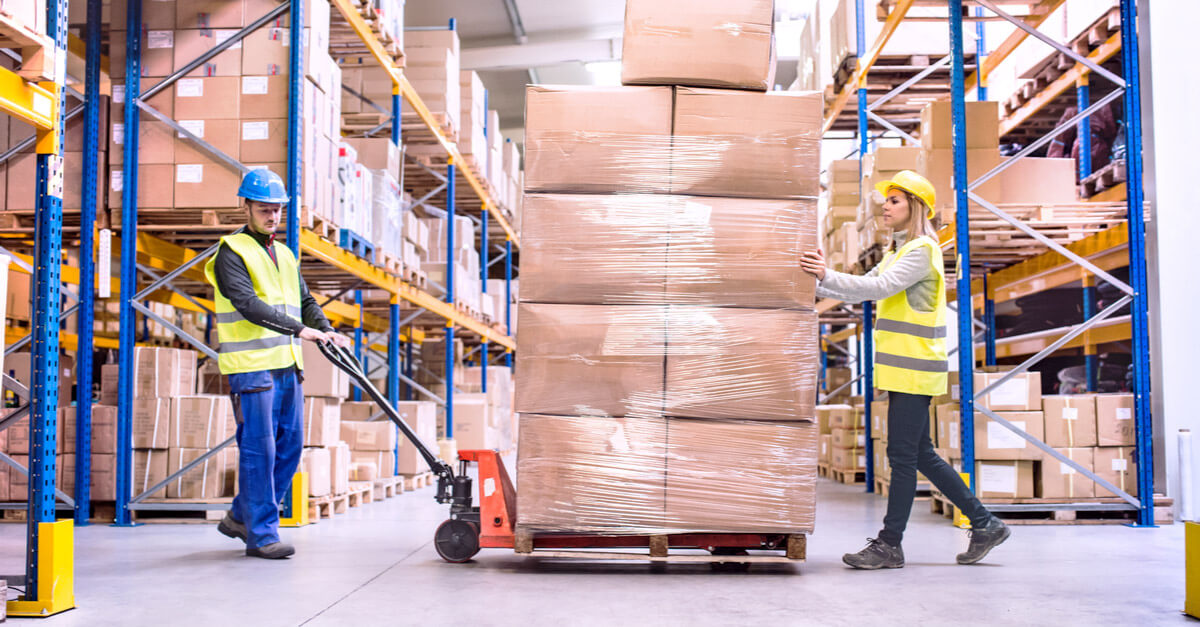If your business premises include warehouse facilities, you’ll already be aware of the issues involved in keeping warehouse staff safe. Warehouse hazards are complex due to the many different activities performed in warehouse settings, from lifting and handling heavy goods to managing moving vehicles such as forklifts.
Other less serious injuries are also common, and even the most minor of warehouse accidents can result in damaged stock and lost productivity, even if no-one is hurt. The popularity of online shopping has increased significantly in recent years, putting extra demands on many warehouse staff, and meaning that it is often necessary to hire less experienced seasonal staff, making warehouse safety ever more important.
Why a health and safety strategy is important for warehouses
The Health and Safety Executive (HSE) provides an example risk assessment for warehouse owners and managers, as it is vital to identify all the relevant hazards that the particular premises might have.
There are various pieces of legislation that govern warehouse safety, and the HSE has tried to simplify things for UK businesses by providing a comprehensive guide – Warehousing and Storage: A guide to health and safety HSG76 – which covers many topics, such as lifting and handling, working at height, site transport, and other avoidable risks and hazards associated with warehouse safety.
Typical Warehouse Hazards:
Warehouse hazards that need to be managed include but are not limited to the following:
- Moving vehicles
Ensure that all workers who operate moving vehicles are properly trained, maintain appropriate speed limits, and follow best practices when it comes to vehicle safety. It is also vital to service and maintain vehicles correctly and maximise visibility for drivers with the correct mirror set up, especially when manoeuvring and reversing.
- Slips, trips and falls
Slips and trips are one of the most common injuries at work, and in warehouses where workers are often working at height, falls are obviously a significant hazard. You may need to use anti-slip paint, tape or floor covering. All floors should be level, and it can help to use heavy-duty cord covers if it is necessary to run cables across floors.
- Lifting and handling
Lifting and handling heavy goods can easily cause injury if not done correctly. Staff should be trained in manual handling safety and, of course, trained in the safe use and maintenance of lifting equipment. Minimising or eliminating manual handling can decrease the risk of injury significantly.
- Fire safety
Fire safety is a vital part of any workplace health and safety policy but is particularly vital in warehouses where fires can spread quickly, due to the amount of open space and potential ‘kindling’ in the form of various goods and packaging stored there. Carry out regular fire drills and ensure that fire escape routes and fire doors are clearly marked with relevant signs.
- Pallets and racking
Staff need to be trained in the safe loading and unloading of pallets; safe stacking heights and weights; and the importance of not climbing, leaning, or walking on pallets. Impact protection products such as pallet racking protectors can be very beneficial in ensuring safety in this area.
- Pedestrian safety
As already mentioned, most injuries and fatalities in forklift accidents are pedestrians. Ensure that workers are made aware when they are working in areas with moving vehicles and that they follow basic safety practices such as checking for moving vehicles before leaving or crossing aisles where they are in operation.
- Working at height
Falls from height are the third highest cause of fatal injury, accounting for 20% of fatal accidents, as well as around 80 major injuries a year. Staff need proper training in how to safely work at height, including ladder safety, as unstable or incorrectly used ladders can be highly dangerous. Workers should always use high-quality ladders, steps, and platforms, with appropriate safety features.
- Falling objects
Warehouse staff are at particular risk of falling objects, so this is another area that requires particular attention. The right training is essential to ensure that staff know exactly how to secure and properly move objects stored at height and adhere to safe stacking heights. It is also often necessary to provide warning signs in key areas, and hard hats or other protective head gear, for key workers.
- Housekeeping
Good housekeeping is a vital part of warehouse safety. Ensure that staff know to keep aisles free of obstructions, quickly dispose of packaging and other materials that could cause a safety hazard and keep all fire escape routes clear at all times.
- Personal protective equipment (PPE)
Personal protective equipment is needed in most warehouse settings, and exactly what you need will depend on your risk assessment. Depending on the hazards that your warehouse staff face, they may need hard hats, safety shoes, high visibility jackets, eye protection or hearing protection.
- Training
Warehouse staff should be well-trained in every aspect of warehouse safety that they need to be to carry out their job safely. The type and level of training given will depend on their duties and responsibilities. While only a few specialist workers may need forklift training, every worker on the site needs to know about fire safety and fire escape routes, for example.
- Reporting hazards
Another aspect of safety that all staff need to be trained in is reporting hazards. Develop a set procedure for this and ensure that all workers know what it is. This means that any temporary hazards, or new hazards that arise, can be quickly dealt with by the appropriate manager or staff member.
Ultimately, warehouse safety rests on a combination of good policies, proper training, and appropriate safety equipment. Make sure that your warehouse facilities incorporate all three to minimise the chance of accidents and injuries.
If you require assistance in the evaluation of your warehouse health and safety arrangements, contact your Principal Advisor and arrange a health check.











